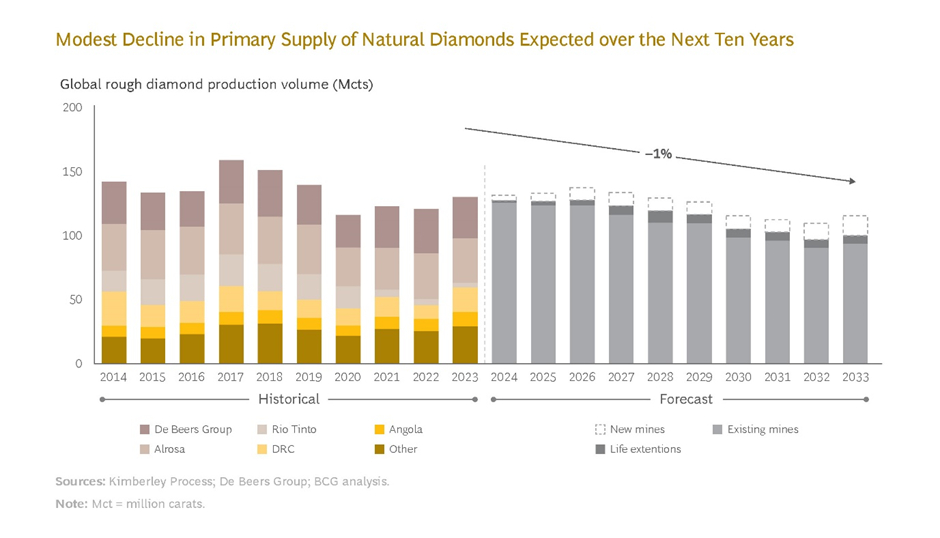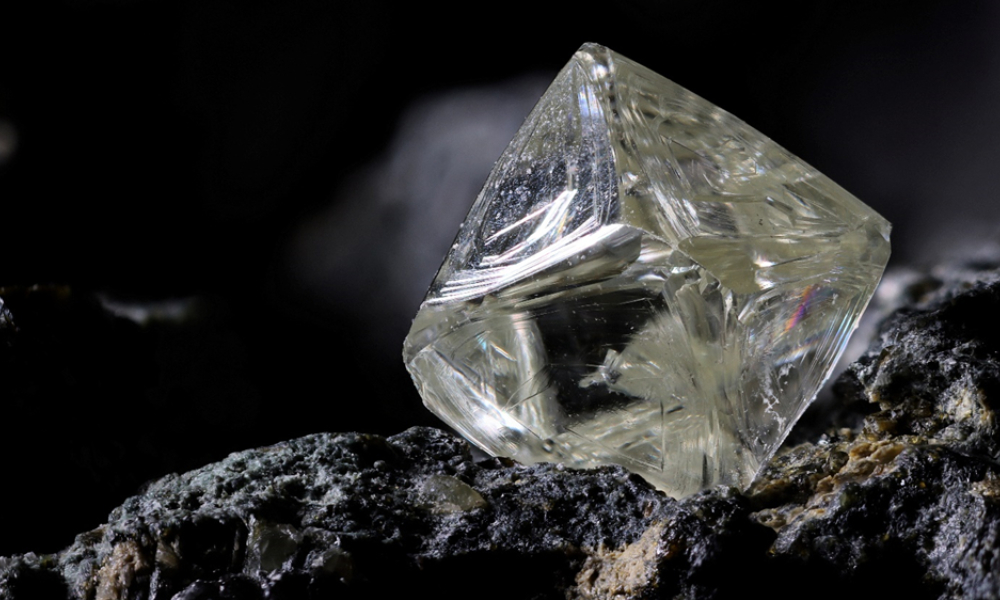The natural diamond industry is on the cusp of a major transformation, grappling with a tightening supply and shifting consumer demands. A new report by the Boston Consulting Group (BCG), commissioned by De Beers Group, unveils the critical factors that will shape the future of the natural diamond market.
In an era marked by rapid changes and emerging challenges, the natural diamond industry stands at a pivotal juncture. A recent report by the Boston Consulting Group (BCG), commissioned by De Beers Group, sheds light on the critical factors shaping the future of the natural diamond sector. With primary diamond supply projected to decline and demand dynamics evolving, the industry is poised for a significant transformation, it notes.
The cornerstone of the natural diamond industry’s future is the anticipated decline in primary supply. The report highlights that the primary production of natural diamonds is expected to decrease by approximately 1% CAGR over the next decade. This decline is driven by the diminishing yields from ageing mines, a scarcity of new discoveries, and constrained exploration budgets over the past ten years. While there is potential for some increase through brownfield expansions, the overall outlook suggests a tightening of supply.

Recycled diamonds, often seen as a secondary supply source, are not expected to significantly impact the market within the next ten years. They are projected to contribute less than 10% of the total supply of natural polished diamonds. This limited impact underscores the industry’s reliance on primary sources and the inherent stability provided by constrained supply.
On the demand side, the future of natural diamonds is influenced by global economic factors and changing consumer preferences. The report identifies three key dynamics that will shape demand: the continuing rise of brands, the adoption of lab-grown diamonds (LGDs), and the evolving desires of the growing middle class in Asia.

The report notes that the natural diamond industry has a unique opportunity to catalyse collaboration across the value chain. It calls for industry participants to unite in restoring the desire for natural diamonds, stimulating demand in new demographics, and creating new purchase occasions. This collective effort is seen as essential to maintaining the desirability and value of natural diamonds in a competitive market.
Effective marketing strategies and a clear strategic direction are pivotal for the industry’s future. The report emphasises the need for continuous efforts to build desirability among US consumers and to expand market presence in Asia. By leveraging historical marketing successes and adapting to contemporary consumer trends, the natural diamond industry can navigate the current challenges and secure a bright future.
As the natural diamond industry faces a critical moment, the insights from BCG’s report provide a roadmap for navigating the evolving landscape. With a focus on strategic collaboration, effective marketing, and adapting to shifting demand dynamics, the industry can harness the opportunities presented by constrained supply and changing consumer preferences.
The future of natural diamonds, while challenging, holds the promise of transformation and renewed growth, the BCG report notes.

